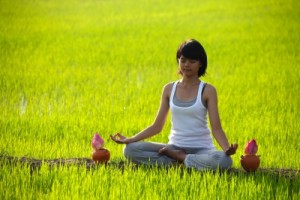Spiritual Practices
One of the recurring problems that we face is managing the different roles we have in our lives (such as parent, professional, spouse, coach, friend, or business owner). Each role we play requires us to value different things, which creates conflict and fragmentation in our psyche. Developing a spiritual practice helps us to deepen our humanity, expand our wholeness, and connect to the source of creation. It also assists us to develop a unifying centre within ourselves that will promote congruence, power, and simplicity. It is from this centre that we can seek clarity, counsel, and confidence to handle the challenges of the different roles we uphold.
Many of the problems that we have presented in the book Choices of Now stem from our separation from other beings and the environment. Connecting to the source of creation—divinity, sacredness, the unnamed, holiness, etc.—helps us to see that we are all one. This awareness brings out our deeper humanity, and this is where our compassion and reverence for all life becomes a natural state for us.
Almost all spiritual traditions emphasise on the need to meditate. Meditation helps us quiet our minds and hearts so that we can alter our vibrations and tune in to the stillness and silence where all the answers reside. A large part of the meditation process is about surrendering our need for control and our attachments. We enter the realm of pure consciousness, free of rules and regulations, free of fear and desire, of physical distractions. This is also the process that connects us to the collective consciousness, to what is beyond us as individuals.
Our ego is the deterrence to our freedom and new desired world because it is culturally conditioned. Built on fear, pride, and control, what we call our ego creates a worldview that strongly determines how we think, feel, and act in every situation. As a result of that we are literally not able to see anything outside of it. When we can imagine something outside of our worldview—when we create an image of a new world—we develop new connections between our neurons and over time establish new meanings and relationships to the image. Without this new image, neural connections, and meanings we have no energetic and informational means of attuning ourselves to a new paradigm.
Through meditation we can:
- progressively surrender our fear, pride and control;
- soften our “I” and strengthen our “we” consciousness;
- develop mindfulness, compassion, divine courage, and faith;
- create a new world vibration and resonate with others;
- use this new world consciousness to guide our daily actions.
Many people detach their meditation experience from day-to-day living, but it is important that we bring this practice into our daily routine; the deeper meaning of spiritual development is to bring the wisdom of heaven to earth. More and more people in spiritual practice believe that heaven is not just a realm outside of us, but also a place we live in and cherish within ourselves. Again, the important point is to bring what we experience during meditation into our moment-to-moment living; if we experience compassion in our meditation, we must also be compassionate in other activities that we engage in.
If there is one thing that can improve everything in our lives if we do it consistently, that is meditation. This mind- and body-emptying, centring, or focusing process, is sometimes called praying and contemplation; it increases our compassion and understanding in all relationships and helps us to see the relevance and importance of eating responsibly and compassionately; it redefines our priorities and simplifies our lifestyle consumption by promoting self-sufficiency; it helps us to examine our usage of resources and reduce wastage; it raises our awareness of suffering and willingness to help the less fortunate; it expands our consciousness to appreciate the beauty, interdependence, and divinity in all living and non-living things.
Meditation is an easy process to learn, but it takes a lifetime to master. It requires the right attitude of openness, acceptance, trusting, and patience. For the beginner, it is useful to accept that meditation is not about the quantity, but the quality of the experience. Here are the basic guidelines:
(1) find a quiet space; stretch or scratch to make yourself comfortable;
(2) sit on a chair or on the floor; close your eyes, progressively relax your muscles from the top of your head to your feet;
(3) focus all your attention on your breathing; notice the pauses before and after each exhalation and inhalation;
(4) visualize your surroundings and expand your peripheral vision; immerse yourself into the environment;
(5) be aware of the presence of your consciousness; tune in to the silence and emptiness;
(6) mentally, emotionally and physically, hold the silence and stillness as long as you can;
(7) after a period of silence, post your question or intention gently; it is alright if the answer is not clear—it may present itself to you after your meditation;
(8) to end the practice, bring your awareness into your body; wait for a sense of certainty and calmness, then open your eyes.
Here are some useful links to different web-pages where you can learn more about how to meditate. They are mostly catered to beginners, so if you are new to this practice and interested in taking it up, they provide the answers to different questions or concerns you may have.
Click here for a beginner’s guide to meditation, FAQ, meditation styles, how to sit, meditation as medicine, creating a meditation space and more.
If you find it difficult to quiet your mind, these 20 practical tips can be useful.
Here is a Youtube video you can use for a simple, guided meditation.
If you already know how to meditate or if you simply want to calm your senses for a few minutes, you can do so by entering one of these Gaiam Life Meditation Rooms which offer different soothing nature sounds and music that will ease the process.
